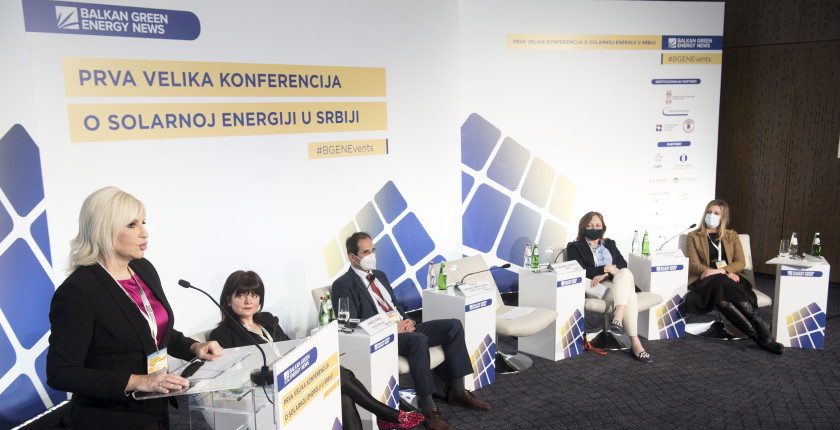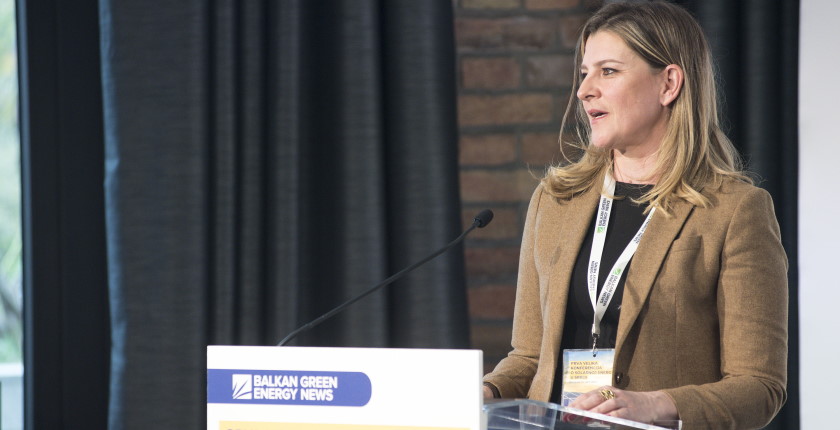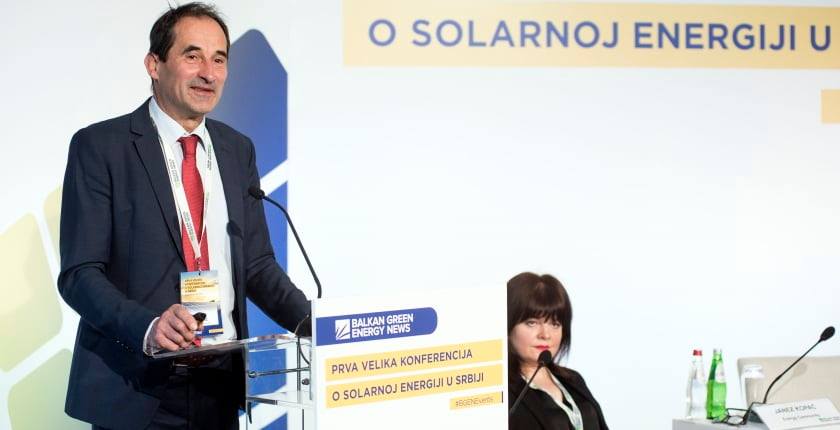
Photo: BGEN
The Law on Renewable Energy Sources will open the door for a solar boom, and substantial photovoltaic capacities can be built and connected to the grid very fast, according to keynote speakers at the First Big Conference on Solar Energy in Serbia. They revealed investors have already shown great interest and that a EUR 12 billion investment cycle in energy would be set in motion when the bylaws are completed.
Solar power plants will be the main driver, together with hydropower plants, of the energy transition and decarbonization process in Serbia, aimed at increasing the share of renewables in electricity production to 40% by 2040, Deputy Prime Minister and Minister of Mining and Energy Zorana Mihajlović said.
Opening the First Big Conference on Solar Energy in Serbia, she expressed belief that the proposed Law on Renewable Energy Sources, which is scheduled to be presented tomorrow in the National Assembly, would be a great step forward. Mihajlović added the government would continue to cooperate with investors and international organizations and financial institutions on forthcoming bylaws.
Mihajlović: The government will continue to cooperate with investors and international organizations and financial institutions on forthcoming bylaws
The regulations will be finished within several months, she said. According to Serbia’s deputy prime minister, the domestic energy sector is about to enter an investment cycle worth EUR 12 billion.
Mihajlović and other speakers said at the beginning of the conference that the bill was produced in an inclusive and transparent manner and that it would enable citizens to become prosumers. It means they can set up solar systems and deliver excess power to the grid. The event was organized by Balkan Green Energy News.
Solar industry can be a game changer and it can significantly contribute to employment and the recovery of Serbian economy from the COVID-19 pandemic, said Founder and Editor of Balkan Green Energy News Branislava Jovičić. In her words, new legislation combined with investor interest is providing an opportunity for a big leap forward in the next five or ten years.
Serbia can and must install 1 GW in solar power capacity by 2030
Vice President of CWP for Serbia Maja Turković asserted that massive activity has been evident in the industry for the past month and that in the next ten years the country “can and must” build 1 GW in solar power capacity.

At first, investors will compete at auctions for market premiums for parts of their solar power plants, while the output from the remainder would be sold on the open market. In time, the entire capacity will switch to the free market and solar energy producers will be the biggest generator of liquidity on the electricity market, Turković stated.
Director of Energize Vladimir Popović stressed both citizens and the industry would achieve savings by building their own solar systems. As for the companies alone, it brings technical progress and the reduction of production costs, he added. Energize offers free advice and even free feasibility studies.
Law to initiate energy revolution
There is “a revolution” in projected investments in renewable energy in Serbia as the new law is about to be passed, said Energy Community Secretariat Director Janez Kopač. He asserted that the entire developed world is orientated toward green energy and that the rapid expansion was enabled by the drop in prices for the technology.

Serbia took on the obligation to introduce carbon pricing, and “no one in Serbia would invest anything in coal” if the expenses would be included, Kopač warned. According to the International Renewable Energy Agency, the country’s solar potential is almost 3.6 GW, compared to just 11 MW in capacity that was installed so far, he pointed out during his presentation.
Losing count of potential investors
Zsuzsanna Hargitai, Regional Director for the Western Balkans at the European Bank for Reconstruction and Development, underscored that the international financial institution “lost count” of those interested in investing in photovoltaics and solar thermal systems for district heating in Serbia. EBRD is ready to support such projects including the residential sector and to increase available funds, she said.
The lender will participate in the conversion of the district heating system in the city of Kragujevac from coal to gas, which has to be conducted immediately, and it can be combined with some form of renewables at a later stage, Hargitai pointed out.
Photovoltaics are already competitive with any conventional power source, and it will become the cheapest one by 2030, according to Benedikt Ortmann from SolarPower Europe and German company BayWa r.e. He noted that solar irradiance in Serbia is excellent.


















Be the first one to comment on this article.